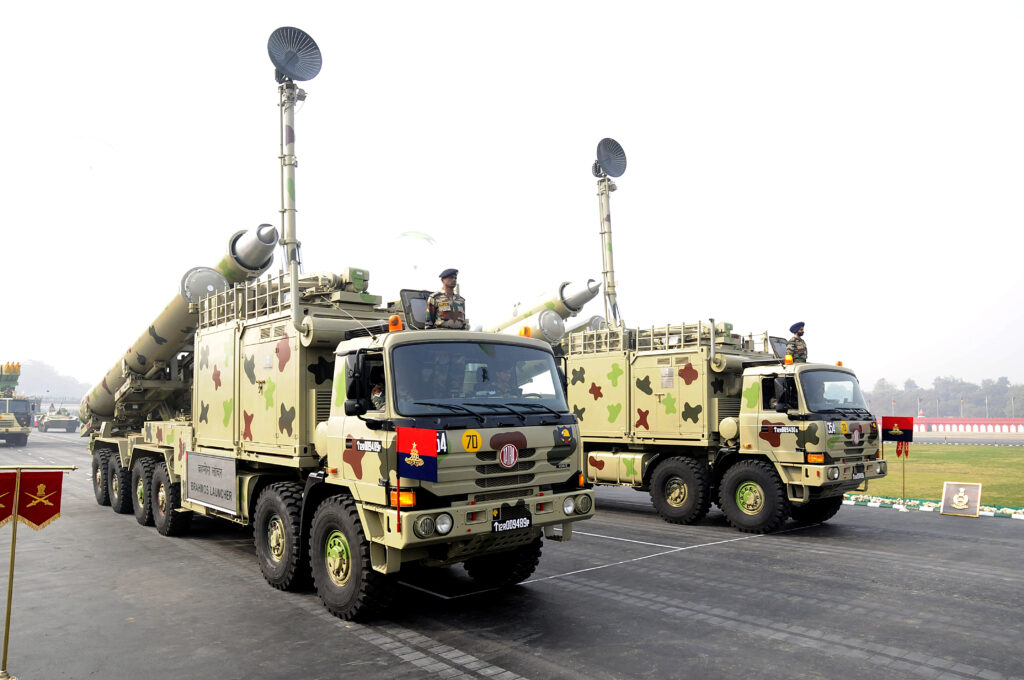
The Philippines Department of National Defense has contracted for BrahMos shore-based anti-ship missile system. The $368 million contract is for three batteries, as well as launcher vehicles, command and control, training and support.
“Equipping our navy with this vital asset is imperative as the Philippines continues to protect the integrity of its territory and defend its national interests. As the world’s fastest supersonic cruise missiles, the BrahMos missiles will provide deterrence against any attempt to undermine our sovereignty and sovereign rights, especially in the West Philippine Sea,” said Defense Secretary Delfin N. Lorenzana.
The BrahMos uses either an active radar homing system or satellite targeting to deliver its 440-pound warhead. The missile travels at Mach 4 and can reach targets up to 180 miles away. The cruise missile can be used against fixed land targets as well as ships at sea.
The Philippines have been alarmed by Chinese claims to large portions of the South China Sea, including Philippine islands. India, as well, has been engaged in hostilities with China at the border in Ladakh. Both nations are modernizing their militaries, and China is a major motivation.
The BrahMos program began in 1998. BrahMos is a joint Russian-Indian project, and comes in land-based and ship-mounted versions. The weapon is operational with India’s navy and army. India has been seeking export customers for Brahmos for some time. The Philippines deal is the first.
The BrahMos anti-ship batteries will be operated by the Philippines marines. Additional BrahMos systems for precision strike land attack missions are being sought for the army artillery regiment.
The installed radar with the launcher system has limited range, nowhere near the range of the weapon. The system is best employed as part of an integrated with a intelligence, surveillance reconnaissance engagement network, which can include land, sea and space-based sensors, something the Philippines need to develop.
- A Day to Remember - September 11, 2023
- Indo-Pacific Maritime Security Exchange will examine emerging capabilities and capacity - July 12, 2023
- Cold Waters Spark Warm Relationship - April 20, 2023



